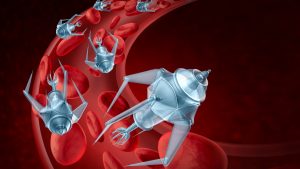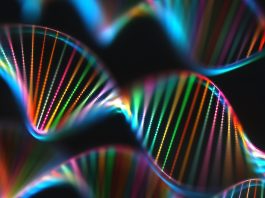A team of US researchers have identified specialised self-propelled, microscopic particles that may be the perfect candidate for future nanorobot technology.
The discovery, accomplished by a team of researchers at the University of Colorado Boulder, has potentially distinguished the perfect base in which to manufacture the next generation of nanorobot technology, with these novel particles – named nanoswimmers – comprised of characteristics that make them highly versatile and ideal for a range of applications.
The nanoswimmers have been demonstrated to escape from mazes up to 20 times quicker than comparable passive particles, possibly making them ideal in fields such as industrial clean-up operations and medication delivery. Nanorobot technology containing nanoswimmers could, theoretically, be employed to deliver drugs to specific areas of the body, enhance water filtration, or even remediate contaminated soil, as they display proficiency in escaping cavities within maze-like structures.
The research is published in the Proceedings of the National Academy of Sciences.
Daniel Schwartz, the senior author of the research and a Glenn L. Murphy Endowed Professor of chemical and biological engineering, said: “This is the discovery of an entirely new phenomenon that points to a broad potential range of applications.”
A discovery 20 years in the making
Theoretical physicists discovered nanoswimmers around two decades ago, and although they captivated scientists’ imaginations with their potential purposes, due to being difficult to observe, they have not been realised yet as researchers have been unable to model their movement.
Nanoswimmers – also known as Janus particles – are minuscule spherical particles comprised of silica or polymer, containing different chemical properties on each side of the sphere. One of the hemispheres of the particle instigates chemical reactions, while the other does not, generating a chemical field that enables the particle to consume energy from the environment, converting it into self-propulsion.
“In biology and living organisms, cell propulsion is the dominant mechanism that causes motion to occur, and yet, in engineered applications, it’s rarely used. Our work suggests that there is a lot we can do with self-propulsion,” said Schwartz.
Passive particles – known as Brownian particles – display random movement, with the team converting these passive Brownian particles into Janus particles to conduct their research, subsequently making the resulting nanoswimmers navigate a maze made of a porous medium, comparing the efficiency and effectiveness between the two particles.
The Janus nanoswimmer particles were 20 times more effective at escaping cavities than the Brownian particles, strategically searching for holes along the cavity wall, which allowed them to escape much quicker, with their self-propulsion providing them with an energy boost to exit the holes.
“We know we have a lot of applications for nanorobot technology, especially in very confined environments, but we didn’t really know how they move and what the advantages are compared to traditional Brownian particles. That’s why we started a comparison between these two and we found that nanoswimmers are able to use a totally different way to search around these maze environments,” said Haichao Wu, lead author of the paper and graduate student in chemical and biological engineering.
The framework for nanorobot technology
Although extremely diminutive – around 250 nanometres (much smaller than the head of a pin), they are scalable, meaning they could be fashioned into nanorobot technology that could navigate labyrinths of human tissue to deliver medication or permeate the earth to eradicate environmentally hazardous pollutants.

Next, the researchers strived to understand how nanoswimmers behave in larger groups within smaller environments or when collaborating with passive particles, which was arduous due to observing and understanding their 3D movement within a maze-like material being incredibly difficult.
“In open environments, nanoswimmers are known to display emergent behaviour – behaviour that is more than the sum of its parts – that mimics the swarming motion of flocks of birds or schools of fish. That’s been a lot of the impetus for studying them,” said Schwartz.
The team conquered this obstacle by employing refractive index liquid in the porous medium – a liquid that modifies how fast light travels through a material – which made the maze visible to the researchers, who used the technique of double-helix point spread function microscopy to observe the movement of the particles. This allowed the researchers to track the 3D trajectories of the particles, from which they could extrapolate the data into a visual representation, providing a comprehensive analysis of their behaviour and movement.
“This paper is the first step: It provides a model system and the imaging platform that enables us to answer these questions,” said Wu. “The next step is to use this model with a larger population of nanoswimmers to study how they are able to interact with each other in a confined environment.”









